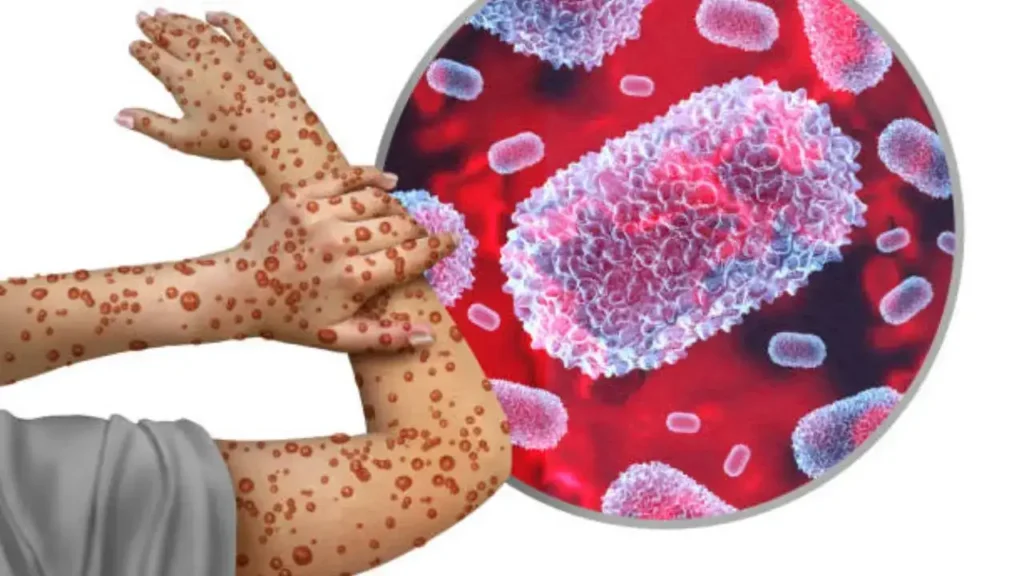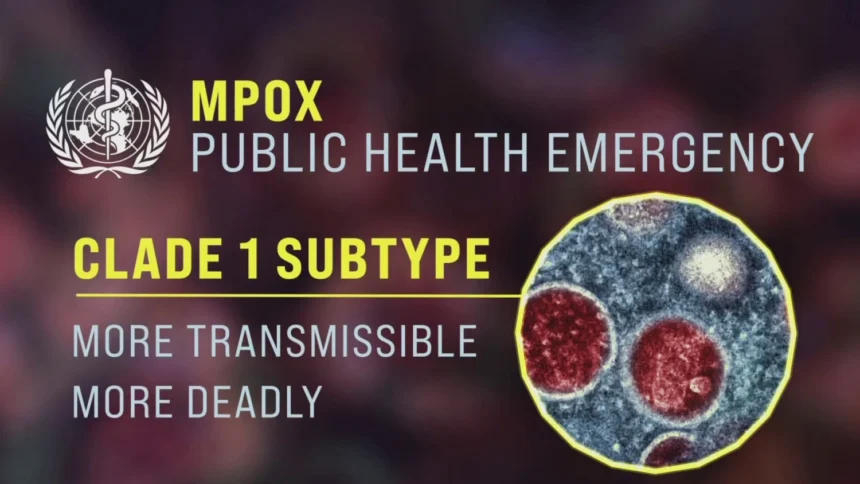Clade 1 Mpox Virus Found in U.S. Wastewater: Health officials in the United States have recently made a concerning discovery: the Clade 1 strain of the mpox virus has been detected in wastewater samples. This finding has triggered heightened surveillance and monitoring across the country. Experts warn that the presence of the virus in wastewater may indicate undiagnosed or unreported cases circulating in the community, raising public health concerns and prompting authorities to stay vigilant.
The discovery was first reported on September 24 in Pierce County, Washington. Since then, local and national health agencies have stepped up efforts to monitor the situation and prevent potential community transmission. While the detection is serious, public health officials stress that the overall risk to the general population remains low, though staying alert is essential.
Mpox, previously known as monkeypox, is a viral disease related to smallpox. Its detection in wastewater highlights the importance of early monitoring tools, which help identify outbreaks even before clinical cases are widely reported. Authorities continue to emphasize that wastewater surveillance is an early warning system, providing crucial data for disease control and prevention strategies.
What the Clade 1 Strain Means
Clade 1 mpox is considered more transmissible and potentially more severe than other strains. Its presence in the wastewater suggests that the virus may be circulating silently among community members who have not yet been diagnosed.
Experts note that this detection does not mean an immediate outbreak, but it serves as a signal for heightened vigilance, including monitoring for symptoms, testing suspected cases, and reinforcing preventive measures.
Read about: Severe Hypertension During Pregnancy: Who Is at Risk, Why It Happens, and How to Protect Your Heart Health
How Mpox Is Diagnosed
The diagnosis of mpox requires laboratory testing, typically through:
- Viral DNA detection in lesion samples or clinical specimens.
- Physical examination of rashes, lesions, and other characteristic symptoms.
Common mpox symptoms include:
- Fever, chills, and fatigue
- Swollen lymph nodes
- Rash or lesions on the face, hands, or other parts of the body
- Muscle aches and headache
Anyone experiencing these symptoms after possible exposure should seek medical attention promptly.
Treatment and Management
There is no specific cure for mpox, but treatment focuses on relieving symptoms and supporting recovery:
- Supportive care: hydration, pain relief, and wound care
- Antiviral therapy: drugs like tecovirimat (TPOXX) may be prescribed in severe cases or for high-risk individuals
- Isolation: to prevent spread to others
Most patients recover within 2–4 weeks, but timely medical care is crucial to reduce complications.

Public Health Guidelines and Safety Measures
Despite the wastewater detection, public health experts emphasize that the risk to the general population remains low. However, preventive measures are important to reduce the chance of infection:
- Avoid close contact with anyone showing rash or lesions
- Practice good hand hygiene, especially after touching potentially contaminated surfaces
- Stay informed with updates from local health authorities
Wastewater surveillance allows authorities to detect viral circulation early, giving communities time to prepare and respond effectively.
Conclusion
The discovery of the Clade 1 mpox virus in U.S. wastewater is an important public health signal. While there is no cause for panic, it highlights the importance of monitoring, early detection, and preventive measures to limit potential spread.
Wastewater surveillance provides a critical tool for identifying undiagnosed infections and guiding public health responses. Keeping an eye on symptoms, staying updated with official health guidance, and seeking medical care when necessary are the best ways to stay safe.
This finding reinforces the need for communities to remain vigilant, follow health recommendations, and support efforts to prevent the spread of infectious diseases like mpox.
Also read: Nothing Phone 4a Pro: Leaks, Specs, Features, and Everything We Know So Far
FAQs
1. Can mpox spread through wastewater?
Currently, there is no evidence that mpox can infect people directly through wastewater. The virus is detected in wastewater as genetic material shed by infected individuals. It serves as a signal of community transmission, rather than a direct route of infection.
2. How is mpox transmitted?
Mpox spreads through direct contact with lesions, bodily fluids, respiratory droplets, or contaminated surfaces. Close contact with infected individuals increases the risk of transmission.
3. What are the common symptoms of mpox?
Symptoms include fever, chills, swollen lymph nodes, fatigue, muscle aches, and rashes or lesions. Early detection is important to prevent complications and reduce spread.
4. How is mpox treated?
There is no specific cure, but supportive care helps manage symptoms. Antiviral medications like tecovirimat may be used in severe or high-risk cases. Isolation and monitoring are also recommended.
5. Should the public be worried about Clade 1 mpox in the U.S.?
The overall risk remains low, but the detection in wastewater indicates undiagnosed cases may exist. Staying alert, practicing hygiene, and following health authority updates are key to remaining safe.
